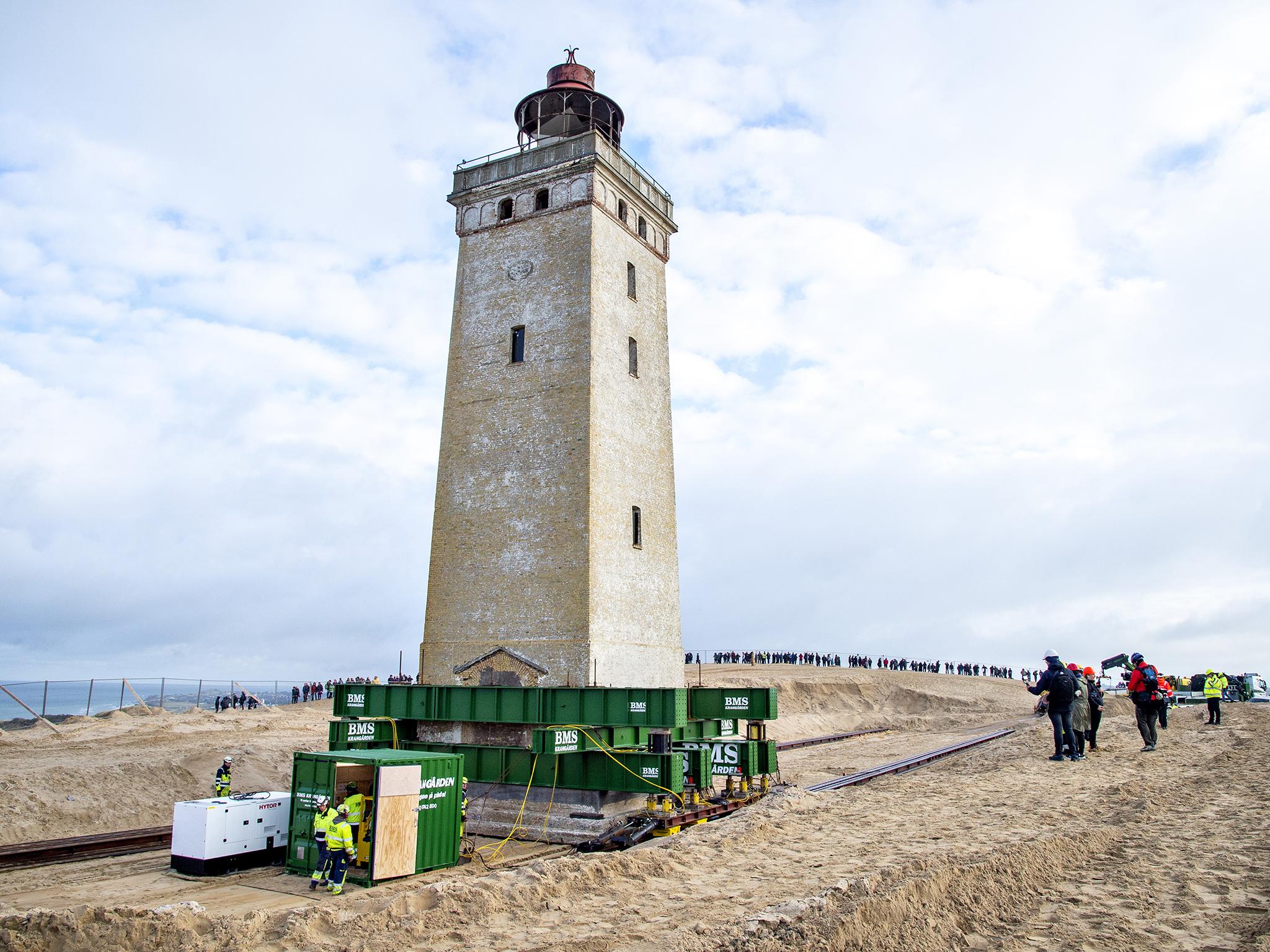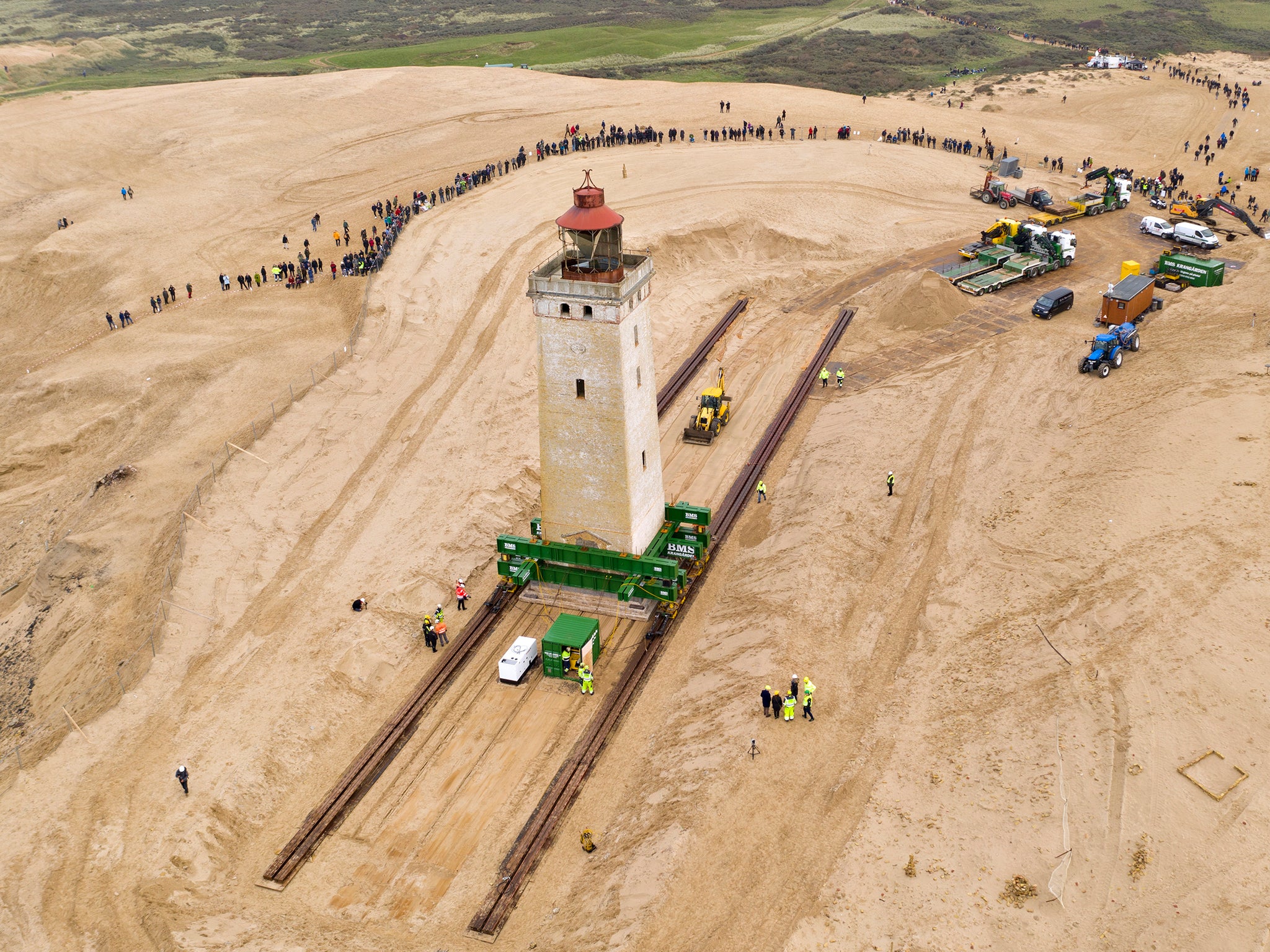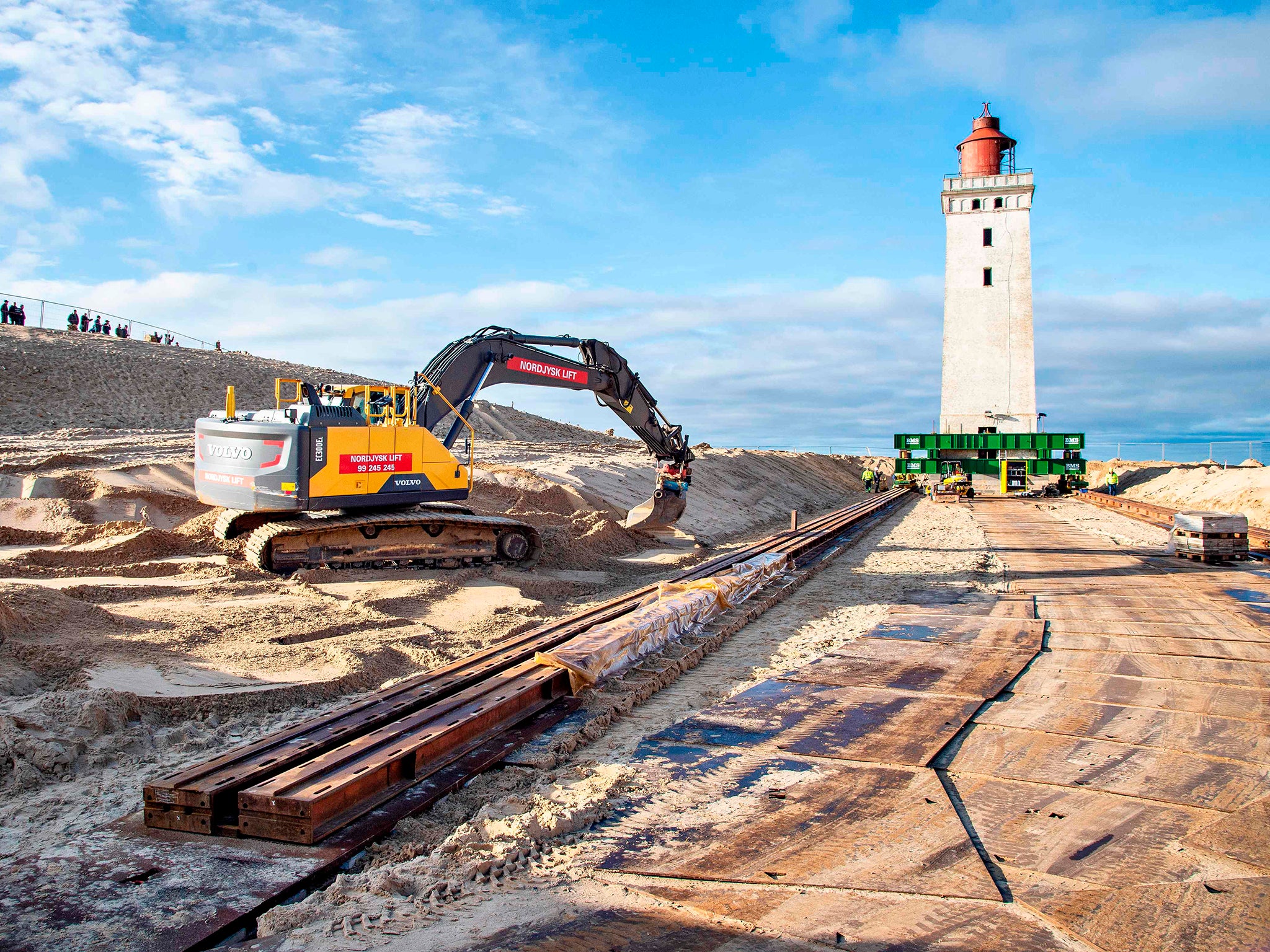120-year-old lighthouse wheeled away from sea due to threat of coastal erosion
Danish ‘national treasure’ will be transported to safety at speed of 26 feet per hour

Your support helps us to tell the story
From reproductive rights to climate change to Big Tech, The Independent is on the ground when the story is developing. Whether it's investigating the financials of Elon Musk's pro-Trump PAC or producing our latest documentary, 'The A Word', which shines a light on the American women fighting for reproductive rights, we know how important it is to parse out the facts from the messaging.
At such a critical moment in US history, we need reporters on the ground. Your donation allows us to keep sending journalists to speak to both sides of the story.
The Independent is trusted by Americans across the entire political spectrum. And unlike many other quality news outlets, we choose not to lock Americans out of our reporting and analysis with paywalls. We believe quality journalism should be available to everyone, paid for by those who can afford it.
Your support makes all the difference.A 120-year-old lighthouse in northwestern Denmark has been put on wheels and rails in a bid to move it more than 250 feet away from the North Sea amid the threat of coastal erosion.
When the 76-feet Rubjerg Knude lighthouse was first lit in 1900, it was roughly 650 feet from the coast in Jutland. Now it is only about 20 feet away.
Local mayor Arne Boelt said “many things can go wrong” in moving the defunct lighthouse, which weighs about 1,000 tons and sits on top of a cliff 200 feet above sea level.
He added: “But it's worth the risk ... the alternative would be to dismantle the lighthouse."
The move is scheduled to take 10 hours, at a speed of eight metres (26 feet) per hour.
Environment minister Lea Wermelin has called the white, square lighthouse “a national treasure” to explain why her ministry spent five million kroner (£576,000) to save it. Mr Boelt and the town of Hjoerring also have chipped in to foot the bill.

The lighthouse finished operating in 1968 and was briefly turned into a museum, including an exhibit about the structure’s struggle against sand drift.
In the end, it was closed as shifting sands slowly buried the two buildings next to the lighthouse, although the lighthouse still gets more than 250,000 visitors each year.

The area is known for constantly shifting sands and an eroding coastline.
In 2008, a nearby church was dismantled to prevent it from falling into the sea. The Romanesque Maarup Church, built on a cliff around 1250, was picked for scenes in Babette’s Feast, which in 1987 became the first Danish film to win the Oscar for best foreign language film.
AP
Join our commenting forum
Join thought-provoking conversations, follow other Independent readers and see their replies
Comments